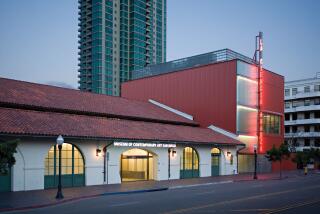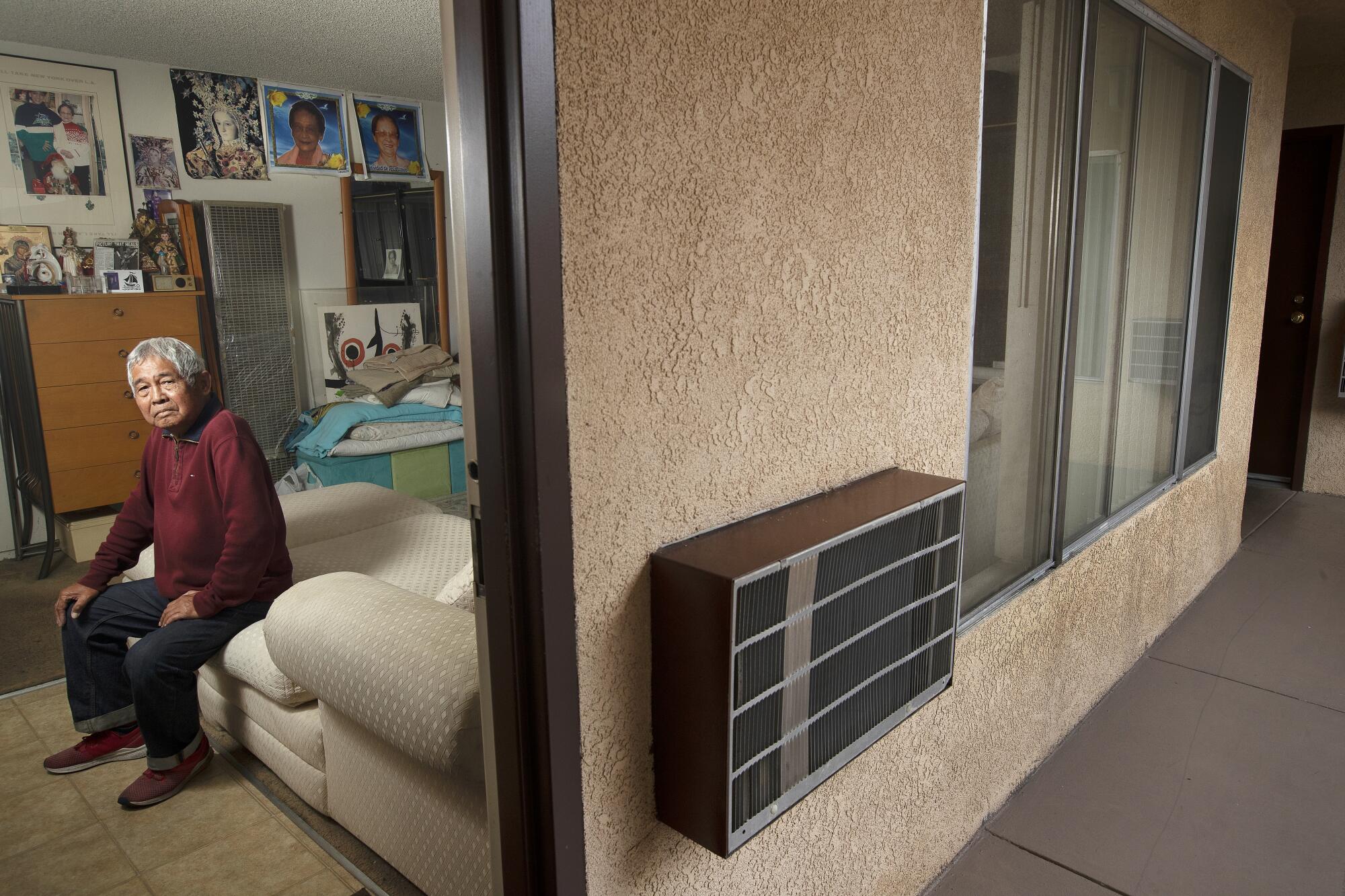
- Share via
Last July, on a brilliantly sunny morning, the Los Angeles County Museum of Art’s outdoor plaza was teeming with visitors. The buildings on LACMA’s campus were about to open, and 80-year-old Ben Barcelona was at the ready. It was a Thursday and Barcelona is always one of the first visitors to step inside on Thursdays.
In a striped Oxford, jeans and running sneakers, a floral tote slung over his shoulder, Barcelona cut through the crowd playfully snapping selfies at the museum’s “Urban Light” installation. He rushed past a bustling coffee cart, stopping at the Broad Contemporary Art Museum building, where he hovered by its locked doors.
Barcelona checked the time on his cellphone, the back of which revealed a virtual portal into his life: layers of colorful museum membership stickers — the Museum of Contemporary Art, the Hammer Museum, LACMA, he belongs to them all.
“It’s 10:58. The doors are gonna open in a minute!” Los Angeles’ most devoted museum-goer announced, his sense of urgency transparent.
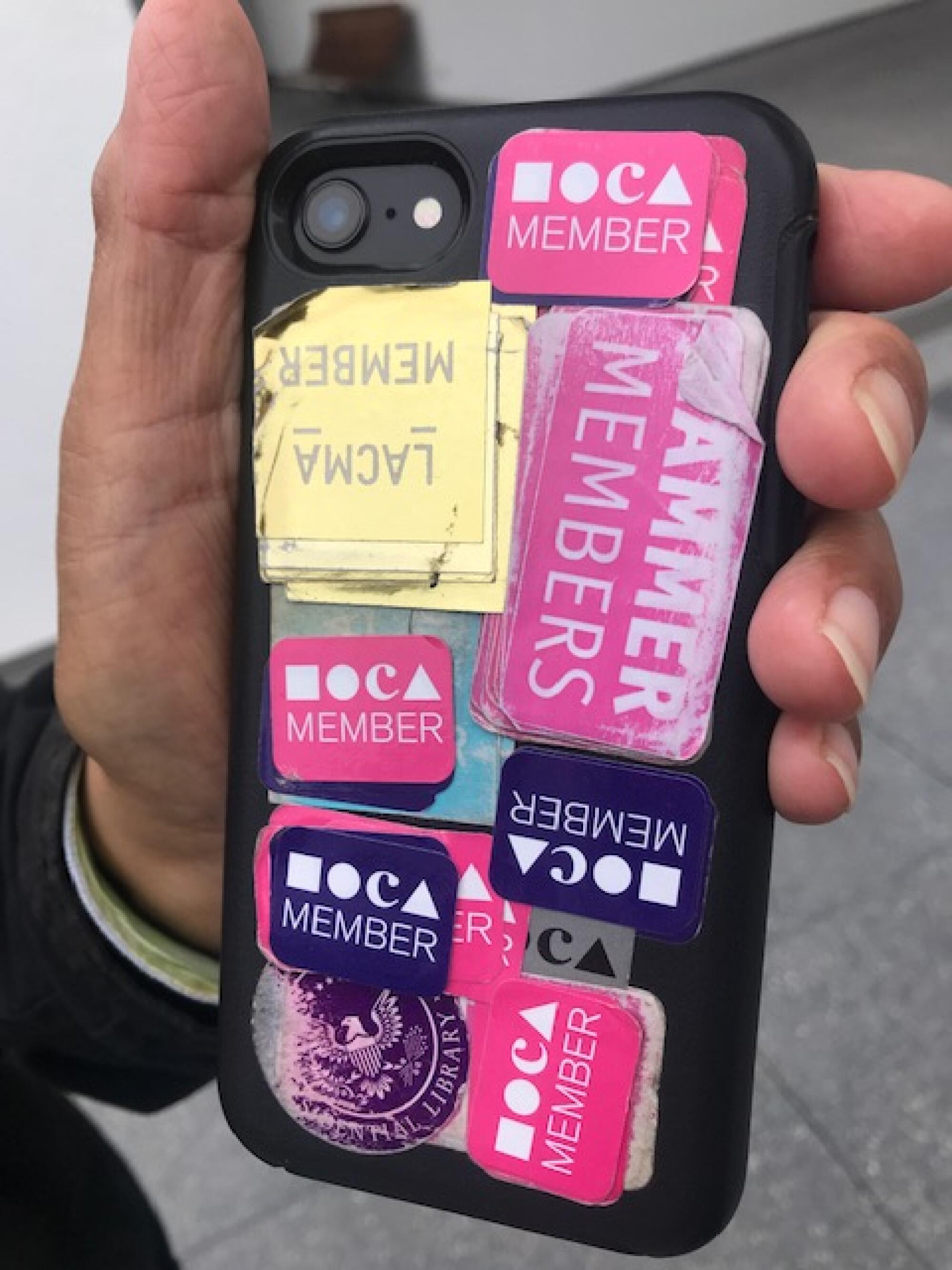
For eight years the retired architect, who immigrated to Los Angeles from the Philippines in 1969, had been visiting a different art museum, gallery or public art installation every day of the week, rarely, if ever, deviating from his routine. MOCA on Mondays, the Broad on Tuesdays, the Hammer on Wednesdays, LACMA on Thursdays, the Getty on Fridays. On Saturdays he made the rounds at “museum quality” galleries; on Sundays, he visited the Cathedral of Our Lady of the Angels, a building he considers an artwork unto itself. On national holidays when museums are closed, he visited public artworks. He’d never taken a sick day from art, he said.
Barcelona’s admittedly obsessive routine has not only kept him mentally engaged and physically fit, he said, but it has provided him an “out-of-the-house living room,” an escape from the cramped Koreatown apartment he shares with two roommates. It has also provided an emotional lifeline. The city’s museum workers — gallery attendants, security guards, educators, ticket booth clerks, retail staff and others — have been like family to him; the artworks and the institutions themselves, his greatest source of comfort and inspiration, his oxygen.
“The museum is my home,” Barcelona said on that July morning. “The whole place, it keeps me alive.”
:::::
Barcelona has lived in Los Angeles for 49 years, a city he cherishes for the quality of its light. He met and married his wife here; their daughter, Kristina, was born here; he worked for five different architecture firms here, helping to design shopping malls and department stores.
Then in 1992 Barcelona’s wife, Divina, died from lupus. He switched gears, taking a less demanding job so he could spend more time caring for his 8-year-old daughter. While he grieved, he made monthly pilgrimages to LACMA to visit George de La Tour’s “The Magdalen With the Smoking Flame,” to his eye the single most beautiful painting in the museum. The flickering candlelight and wisp of smoke, the draping, velvety shadows, engulfed him.
The painting was an altar of healing. It reminded him that “there is beauty, but there is also ending. That life is temporary. Young or old, you never know.”
When he retired at 73, Barcelona began his daily museum-going ritual. His multi-year art odyssey was uninterrupted until the middle of March, when the coronavirus outbreak forced nearly every cultural institution in California to shutter its doors.
The void in his life is palpable, but his spirit is indomitable.
“Oh, my God, this coronavirus…” Barcelona says late last month, as he answers the phone. “And the museums are all closed! And there’s no toilet paper!”
Barcelona is self-quarantining, getting by on fast food and sandwiches he makes at home. “But I’m doing all right,” he says, oddly calm. “It’s our new reality.”
He’s filling the museum vacuum by poring over books about art in his bedroom — currently “The History of Modern Art” and a book about MOCA architect Arata Isozaki — and watching interviews with artists on YouTube via an old iPad.
Hammer Museum curator Aram Moshayedi has emailed Barcelona, sending materials to read and listen to as sustenance. “His routine, all these museums, suddenly taken out from under him,” Moshayedi says. “Just to imagine how he’d be spending his days — I was definitely concerned.”
Barcelona misses chatting with the millennials he meets on his outings, “like-minded people” who make him feel young; he misses the texture of original works on canvas; he misses untitled paintings, because they mirror his open-minded thinking; he misses riding the bus to museums where, as a member, he bypasses admission fees; he misses the skylights at the Broad and the Getty Center’s architecture, where even the tree-pruning is artful.
Barcelona’s fitness tracker no longer boasts roughly 18,000 steps a day either, as it did when he was on his museum-going regimen. But he still takes daily walks in his neighborhood, hand sanitizer stuffed in his pocket.
“I see people looking depressed, stressed, as I walk,” he says. “But, you know, it’s living art.”
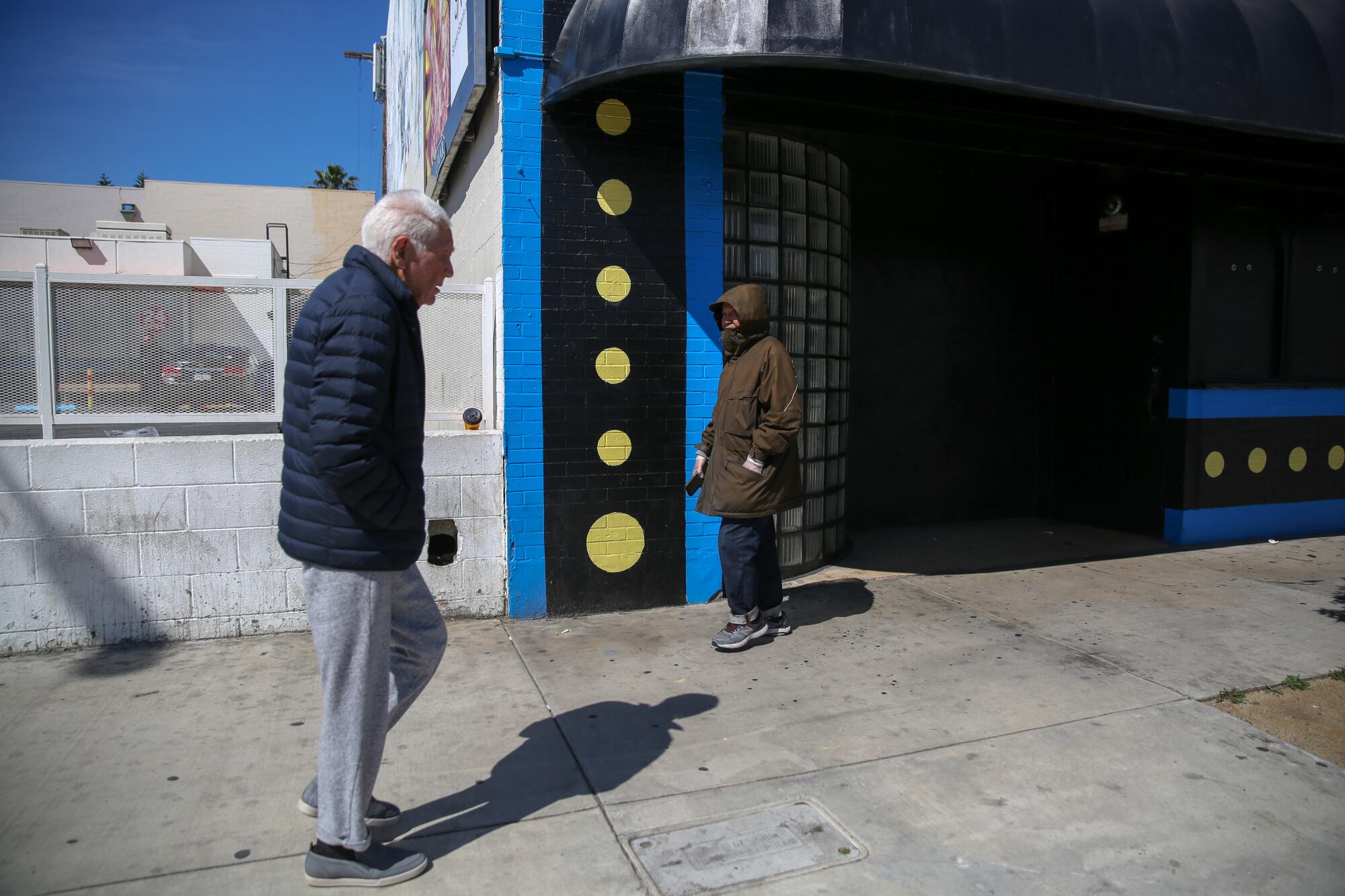
:::::
If museums are town squares of sorts, refuges for the culturally curious and those seeking shared spaces and connections, then Barcelona is one of those town characters whom everyone knows.
Last October, during one of Barcelona’s Wednesday morning visits to the Museum of Contemporary Art, he was quickly greeted by a security guard who said: “You again! Hey, man. How are you?”
Moments later, when a passerby asked the guard: “Where’s the bathroom?” Barcelona jumped into the conversation, pointed and answered: “Oh, across there and downstairs.” It was not intended as an affront— the man simply knows his way around.
Barcelona was there to see “With Pleasure: Pattern and Decoration in American Art 1972-1985,” an exhibition he would visit over 19 consecutive Mondays. His museum trips are short and focused, no more than an hour and a half, but he returns to exhibitions over and over again “until I fully understand,” he said. “I become familiar with the brushstrokes, the color, I go inside — it’s not just seeing once and it’s done.”
His repeat visits, over prolonged periods, have given him a unique bird’s-eye view of the contemporary museum world.
Meandering through the exhibition, Barcelona was animated as he made connections between artists, works and institutions. Observations — and bits of gossip — flowed steadily, unprompted.
Hurrying into the gallery: “These artists who do patterns and decorations, it’s like a revolt against the minimalists!”
Rounding a corner: “Oh, that’s Frank Stella. You can tell by the shapes and the forms.”
Pausing under an exit sign, his voice hushed: “Klaus, now, he’s trying to innovate,” referring to MOCA director Klaus Biesenbach. “Remember [former director] Philippe Vergne and curator Helen Molesworth were always fighting? Klaus, he’s different.”
‘I want to live my life fully, to love fully, instead of just existing. I try to enjoy every moment — and those moments, for me, are understanding art.’
— Ben Barcelona
A female gallery attendant noticed Barcelona and headed over. “Everyone knows Ben!” she said, tossing an arm over his shoulder. He stood stiffly, arms at his side — but he was grinning.
These interactions, for Barcelona, are part of the art experience.
“Life is art, it’s connections,” he said. “I want to live my life fully, to love fully, instead of just existing. I try to enjoy every moment — and those moments, for me, are understanding art.”
Then he tossed his head back and let out a quack-like laugh, adding: “And what else would I do — go to the mall?!”
::::
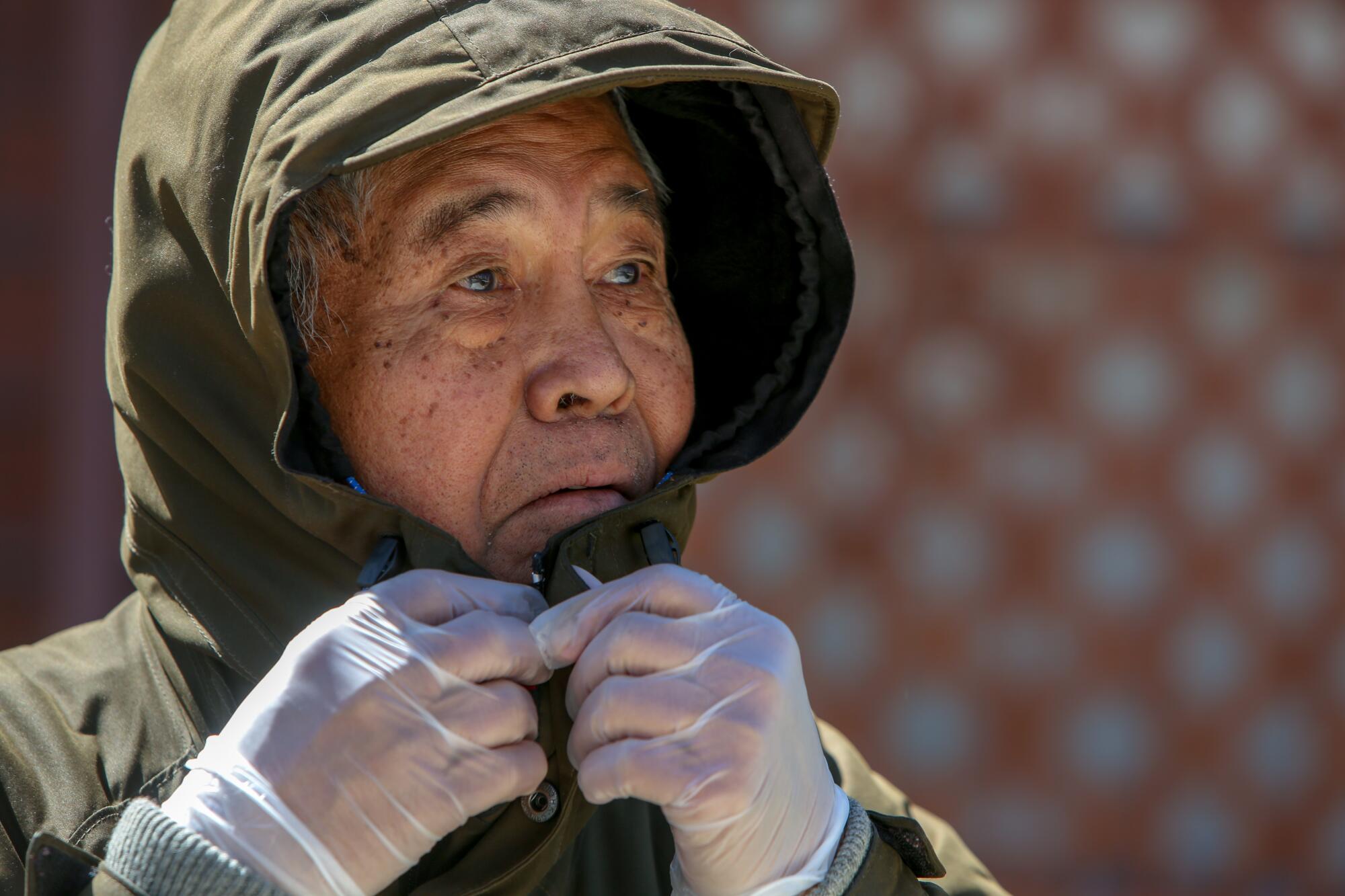
On a recent Sunday, Barcelona awakens at 4 a.m. — a daily habit — and eats a light breakfast while reading about art in his bedroom. It is March 22, his 81st birthday.
The city is quiet, with swaths of typically dense urban areas nearly deserted. Barcelona, who was once a chain smoker (he quit in 1971), says he is not fearful of the respiratory virus that has claimed the lives of so many elderly people. He won’t stay inside all day, not on his birthday.
After livestreaming the 10 a.m. church service at the Cathedral of Our Lady of the Angels, he heads out on a walk to his daughter’s studio apartment, about 30 minutes away on foot. They plan to share Thai takeout sitting more than six feet from each other.
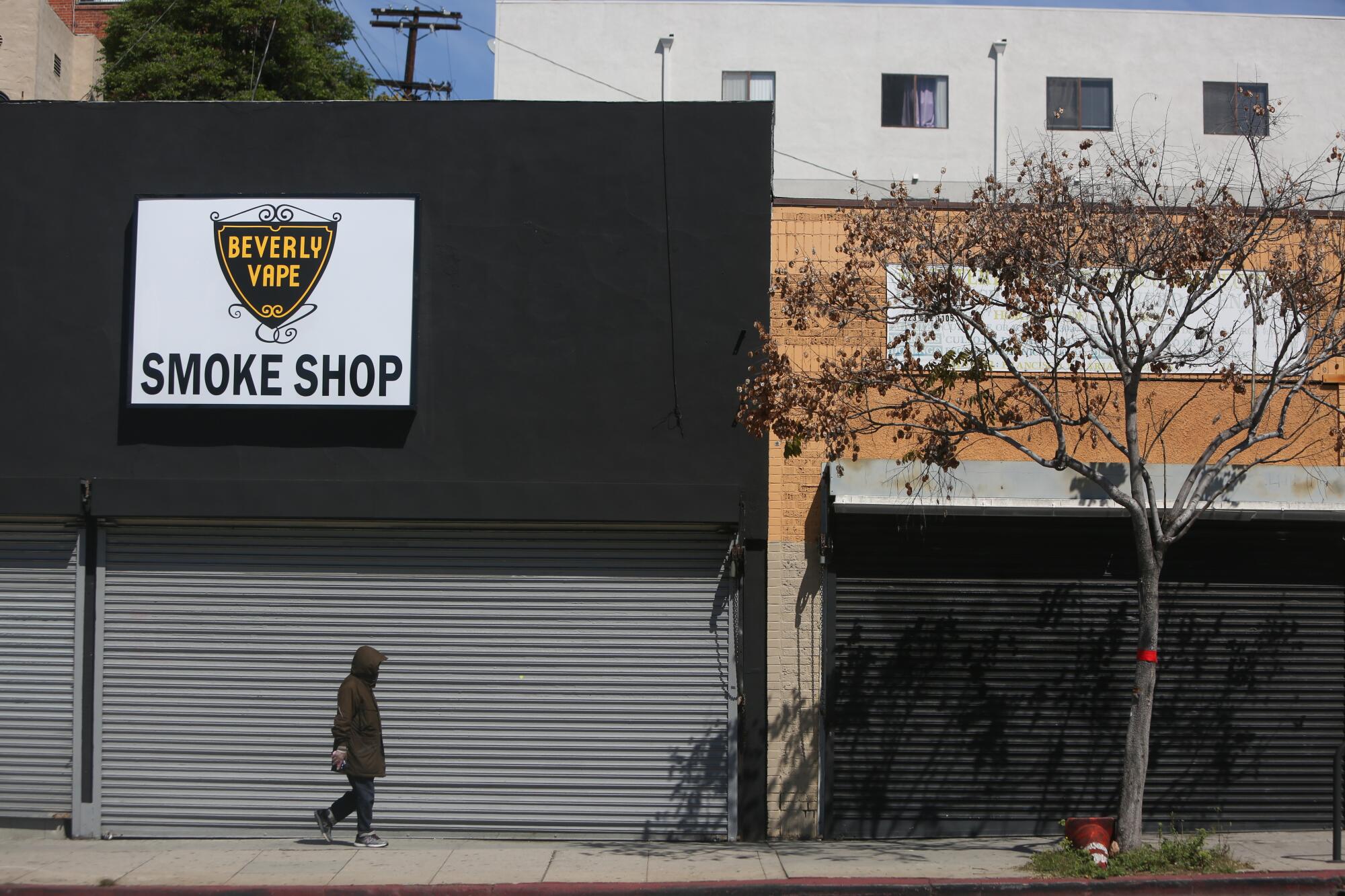
Wearing white rubber gloves and an olive parka, the hood pulled tightly around his head and fastened across his nose and mouth to form a DIY respiratory mask, Barcelona sets out on foot, a lone spot of movement on an eerily empty Western Avenue.
He troops past the darkened noodle houses, the abandoned hair and nail salons, the empty karaoke clubs and vacant seafood restaurants. Past the corner trash dumpsters overflowing with empty pizza boxes and grease-stained Chinese food containers. Past the barefoot, homeless woman in frayed shorts pushing a shopping cart stuffed with her belongings. Past the museum banners, flipping in the wind on Beverly Boulevard, advertising the California Science Center’s now-paused “The Art of the Brick” Lego exhibition. Past the 9-year-old girl gliding across a laundromat parking lot on her scooter, a surgical mask secured on her face as helicopters circle above.
Colorful graffiti murals on the side of an auto body repair shop leave him unenthused: “It’s very abstract. I like them enough,” he says, with a flick of the wrist passing by.
About the still-open frame shop, with paintings for sale on the sidewalk, he simply shakes his head disapprovingly. “Every afternoon I walk by there,” he says, cracking an amused Mona Lisa-like smile. “Meh.”
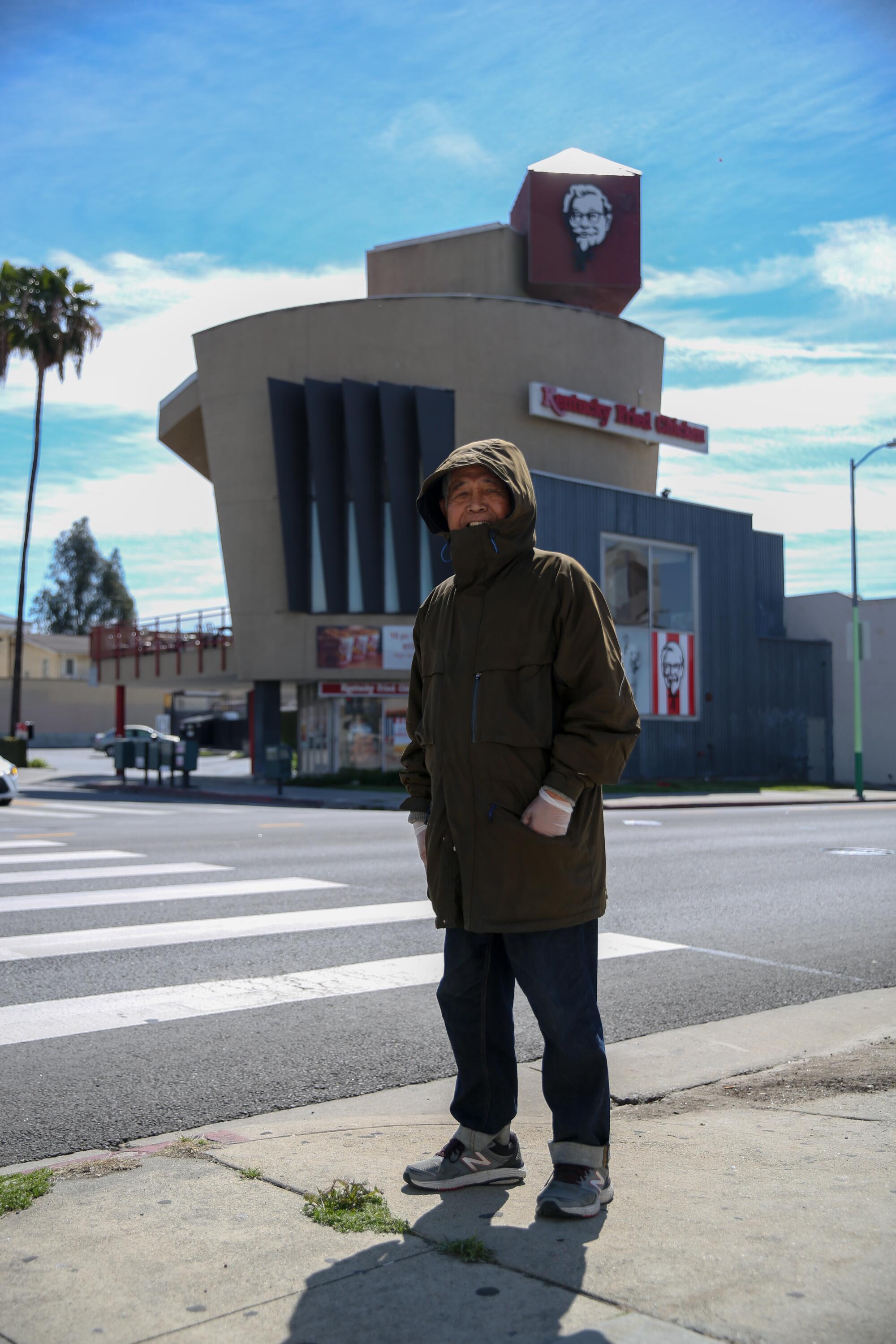
The Kentucky Fried Chicken restaurant on Western — a quirky, modernist structure — however, stops him in his tracks.
“Oh, this. I looove this one,” he says. “You see, the architect is trying to convey the chicken. See the wings? And it’s shaped like a chicken bucket.”
Then he quickly pivots and marches forward. But not without first noting:
“See? There is art everywhere. Now the streets are my museum.”
:::::
Barcelona says his health is as good as ever, chalking it up to frequent walking. But his typically spry voice is slightly more weary than usual the afternoon of March 25. He’s a self-described news junkie, and the headlines have been grim and unrelenting, chock-full of numbers:
MOCA has laid off 97 part-timers, the Hammer, 150 student employees.
“And I know them, I know those people!” he says. “It makes me so sad.”
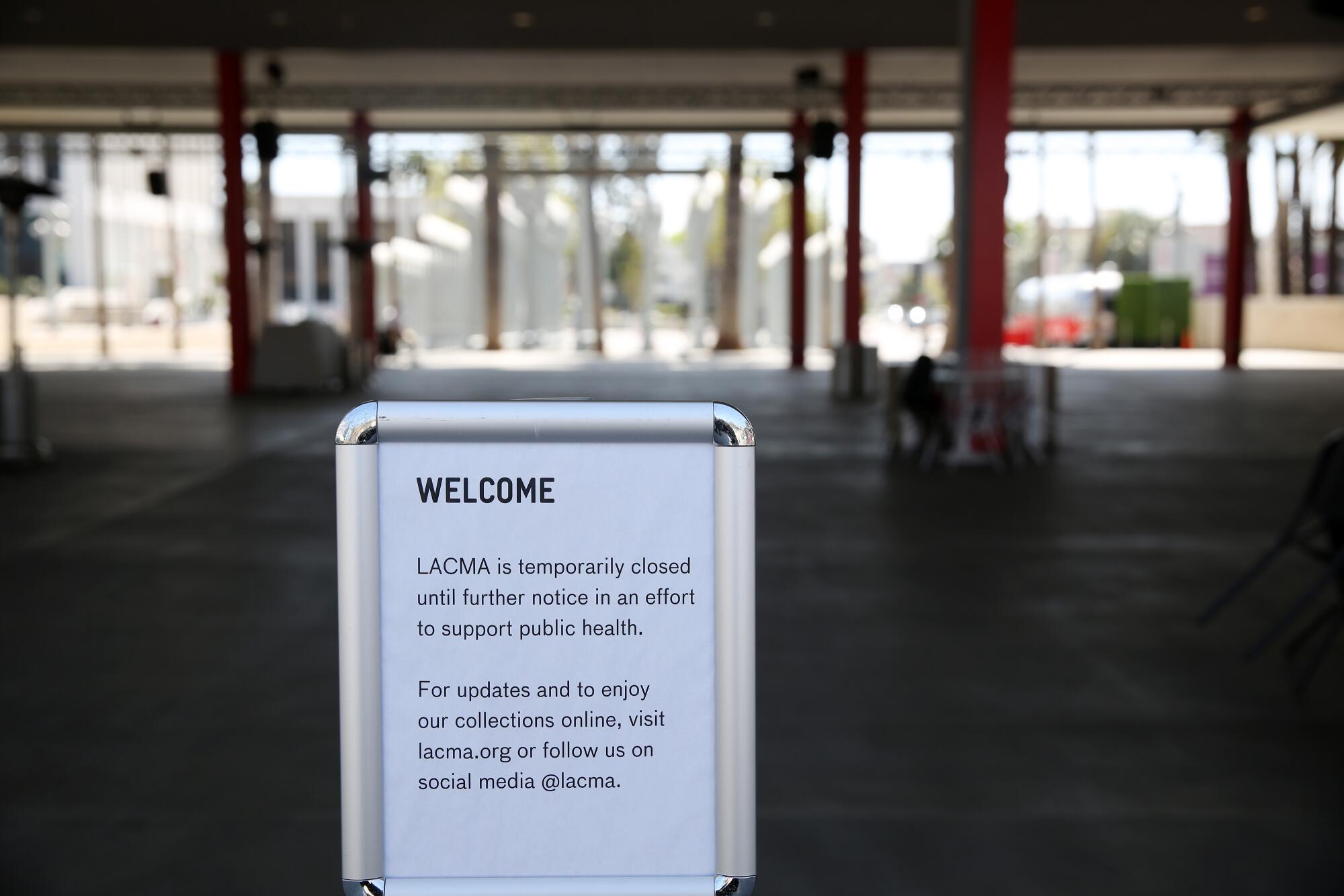
Typically architects like numbers nearly as much as pictures, Barcelona says. Numbers are exacting and certain; cobbled together, they can paint a vivid portrait.
Art museums in the U.S., Canada and Mexico currently house 16,114,156 collection objects, which were visited by 67,638,407 people in 2018, according to the New York-based Assn. of Art Museum Directors. In 2019, LACMA served 260,000 L.A. County youth under age 17, MOCA trained more than 100 teachers from 32 schools and the Hammer Museum presented nearly 300 free public programs. On average, the Getty Library receives 2,200 visits a month, and the Huntington Library, Art Museum, and Botanical Gardens’ 11-million rare books, manuscripts and photographs are picked over by roughly 1,700 international scholars annually.
But numbers are also unforgiving.
As of March 18, because of COVID-19, every one of the association’s 227 member museums in the U.S., Canada and Mexico had closed their doors to the public.
“I just hope that after this virus, the economy will boom and people will contribute to the museum,” Barcelona says. “Art is so important to humans, it’s the food of our soul. These billionaire patrons, they should really give.”
:::::
As the death toll in the U.S. rises, Barcelona says he’s trying to keep positive. As a deeply religious Roman Catholic, he looks to God, and artists, for life lessons.
From the American minimalist Carl Andre he’s learned: “Less is more. The less you have, the more time for yourself, instead of your possessions possessing you.” From composer John Cage: “The environment, it’s music.” From Marcel Duchamp: “Everything is art.”
His now-daily visits with his daughter have become a silver lining of the pandemic. The two have grown closer, their conversations about life, spirituality and nature, deeper.
“She sits on the sofa, I sit on the bed,” he says of family visits during the age of coronavirus. “And when I leave, it’s just elbow touching elbow, no more hugging.”
Barcelona chuckles at the poignancy, another quack-like laugh, then gently clears his throat.
One day, he says, he’ll return to his “out-of-the-house living room.”
“What’s happening today, it feels like wintertime. But there will be a spring. There will be fields and flowers. Like Claude Monet, the impressionist — you look at that and there is no pain. It’s all joy.”
More to Read
The biggest entertainment stories
Get our big stories about Hollywood, film, television, music, arts, culture and more right in your inbox as soon as they publish.
You may occasionally receive promotional content from the Los Angeles Times.


